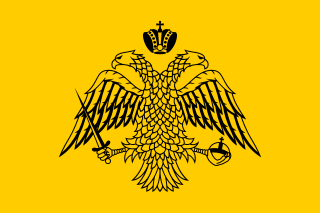Mokissos
Mokissos or Mokisos (Ancient Greek: Μωκισσός or Μωκησός) or Mokison (Μωκισόν) was a town of ancient Cappadocia. The Romans called the city Mocisus or Mocissus, and Mocisum, and after the city was rebuilt by the Byzantine Emperor Justinian (527-565), it was renamed Justinianopolis (Ἰουστινιανούπολις). Justinian made Mocisus the capital of the province of Cappadocia Tertia, and elevated its bishopric to the rank of ecclesiastical metropolis, with an eparchia that stretched south of the Halys River (Turkish: Kızılırmak), the longest river of Asia Minor. The name Justinianopolis was retained until the end of Byzantine rule. Stephanus of Byzantium calls the town Moukissos (Μούκισσος). In the Synecdemus, the name appears as Rhegemoukisos (Ῥεγεμουκισός) and Rhegekoukisos (Ῥεγεκουκισός), the later evidently an error.
_with_Hasan_Da%C4%9F%C4%B1.jpg)
Mokissos is also the formal name for a now inactive Diocese of the Greek Orthodox Church. The current Bishop of Mokissos is Demetrios, who is protosyncellus of the Greek Orthodox Metropolis of Chicago.
Its site is located near Vıranşehir, Asiatic Turkey.[1][2]
References
- Richard Talbert, ed. (2000). Barrington Atlas of the Greek and Roman World. Princeton University Press. p. 63, and directory notes accompanying.
- Lund University. Digital Atlas of the Roman Empire.
![]()
See also
- Churches of Göreme, Turkey
| Patriarchates |  | |
|---|---|---|
| Autocephalous churches |
| |
| Autonomous churches | ||
| History | ||